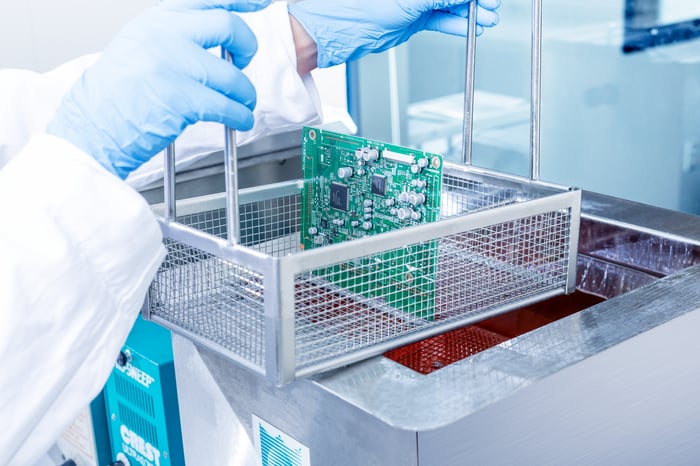Ensuring performance of electronic assemblies in high-reliability applications
If you are manufacturing printed circuit board assemblies (PCBAs) to meet the highest IPC Class 3 standards, you already know that the reliability of your assemblies is crucial to your company’s and your clients’ success. Think for a moment about the safeguards you put in place to ensure that you are delivering assemblies that will work for your end-user. Do you source high-quality materials for your PCB substrates? How about for your surface mounted components? Do produced boards have tracking or lot numbers so that potential issues can be traced back to the source? What steps are you taking to prevent board failure once they are deployed?
 Chefs wash their hands and all their utensils before preparing your food. Before going into surgery, doctors have a comprehensive cleaning procedure to make sure that they do not track potentially harmful pathogens to their patients. You probably even clean your living room before inviting friends or family over. Are you cleaning PCBs before you deliver them to your customers?
Chefs wash their hands and all their utensils before preparing your food. Before going into surgery, doctors have a comprehensive cleaning procedure to make sure that they do not track potentially harmful pathogens to their patients. You probably even clean your living room before inviting friends or family over. Are you cleaning PCBs before you deliver them to your customers?
Once circuitry is printed, and the technology mounted to its surface, residue from fluxes and solder pastes remain around the points of application. Like the emotional computer in Netflix’s Maniac, this flux or solder residue could cause electrochemical migration and dendritic growth which may ultimately damage components causing shorts or failure of the circuitry. To reduce this risk, defluxing processes should be introduced into the production line. Additionally, please note that it is of the utmost importance to clean the assemblies before subjecting to the subsequent conformal coating process.
Three factors determine the effectiveness of your PCB cleaning regimen:
1. Thermal energy
2. Mechanical energy
3. Chemical energy
Just like washing dishes, the warmer the cleaning process is, the easier it will be to remove residue, however too much heat can damage solder joints or the components themselves.
Agitation of various types also helps to remove residue from your PCBs, be it manual cleaning, ultrasonic cleaning, or jet spraying such as in spray-in-air inline or batch cleaning systems.
%20(00000)%20-%20Copy.jpg?width=1170&name=Long%20Batch%20%20(00000)%20(00000)%20-%20Copy.jpg) Batch Cleaner
Batch Cleaner
Lastly, the choice of chemical cleaning agents greatly impacts the effectiveness of the cleaning process. While some processes use only deionized (DI) water or isopropyl alcohol (IPA) as cleaning media, they should only be used in applications where board reliability in the field is not the highest priority.
Precision cleaning agents are engineered to work effectively on the flux and solder paste used in specific applications. Unlike DI water or IPA, chemistry can be engineered to reach under low-clearance components, to allow for a wider temperature/concentration processing window, or to extend the bath lifetime of cleaning chemicals. On a molecular level, a chemically engineered PCB cleaner can bond with multiple contamination molecules or remove the contamination without bonding at all.
Companies need to ask if they can afford to NOT be cleaning PCBs? What is the cost of field failures, or warranty recalls? Will they damage their client relationships if the circuitry shorts out? Could lives be at stake?
If producing circuitry for a highly sensitive application, the risk is not worth taking. If unsure of what is needed by your production, speaking with an application technology specialist for a PCB cleanliness assessment is an excellent first step towards a more reliable product.
Please click here to learn more.
_1.png)


